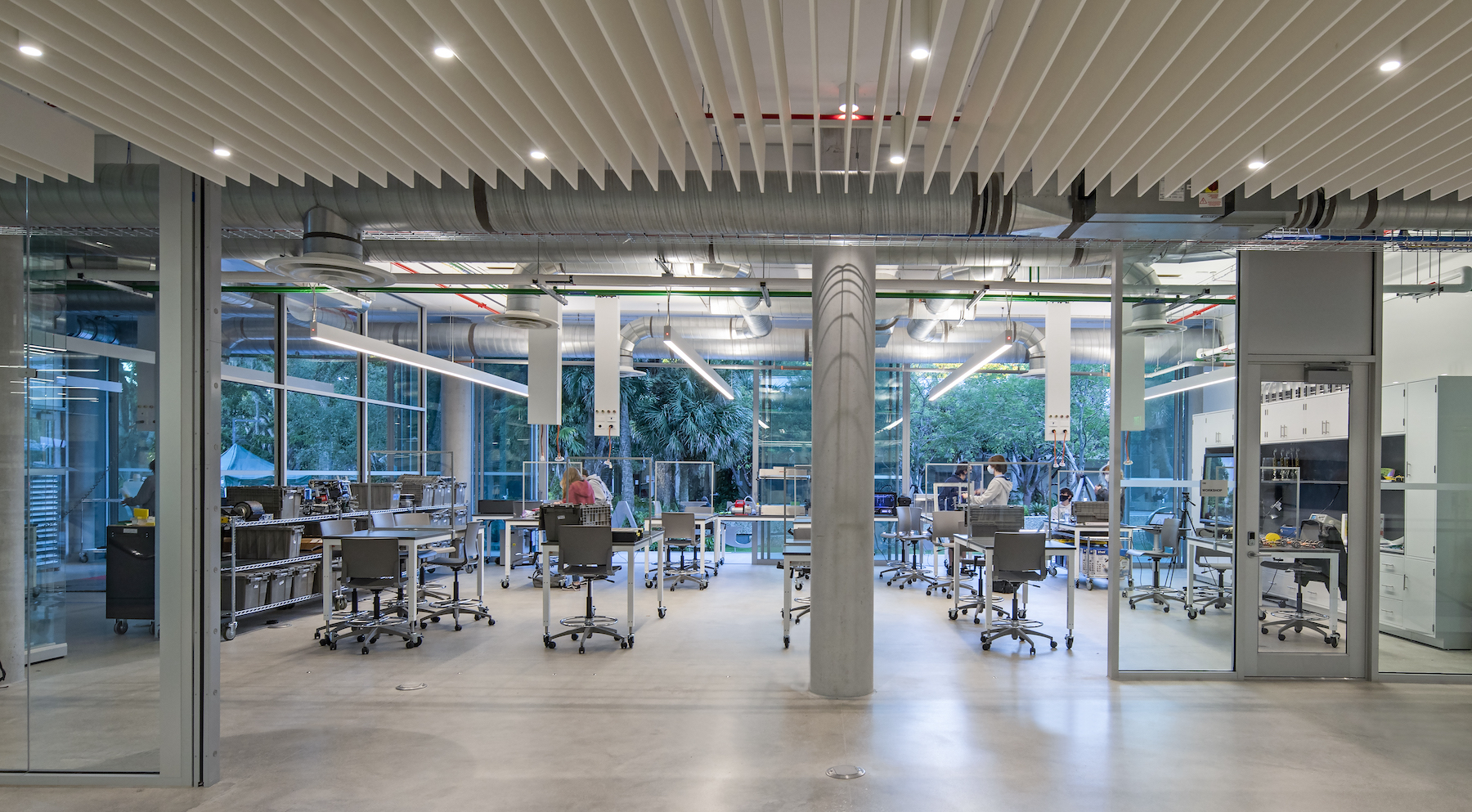When the three-story 45,000-sf Constance and Miguel Fernandez STEM Center for Science and Math opened last September at the entrance of the historic Ransom Everglades School campus in Coconut Grove, Fla., it created a new quad with an outdoor theater and classrooms, art exhibition space, and an outdoor student green. But one thing the new building didn’t have was private offices.
Its designer, Perkins & Will, has seen shared meeting spaces replacing private faculty offices in several of its recent education projects. “This isn’t a trend; it’s here to stay,” says Pat Bosch, Principal and Design Director in P&W’s Miami studio. “We’re seeing it in public schools, too, around the country.
OLD DESIGN IDEAS MADE NEW BY CIRCUMSTANCES
Since the advent of STEM- and STEAM-focused curricula several years ago, schools have been taking their cues from the office and research sectors in terms of rethinking their spaces for collaboration, “with more collision points,” says Bosch.
P&W has a long history of advocating for outdoor learning spaces, and its clients of late are listening to pitches whose angles are about safety and wellness. The shift away from private faculty offices, however, still leaves room for one-on-one learning and communication. P&W’s kit-of-parts approach can include quieter rooms that Bosch believes are less intimidating to students than a teacher’s or principal’s office. “This actually enhances the bespoke educational environment,” says Bosch.
UTILIZING ‘IN-BETWEEN’ SPACES
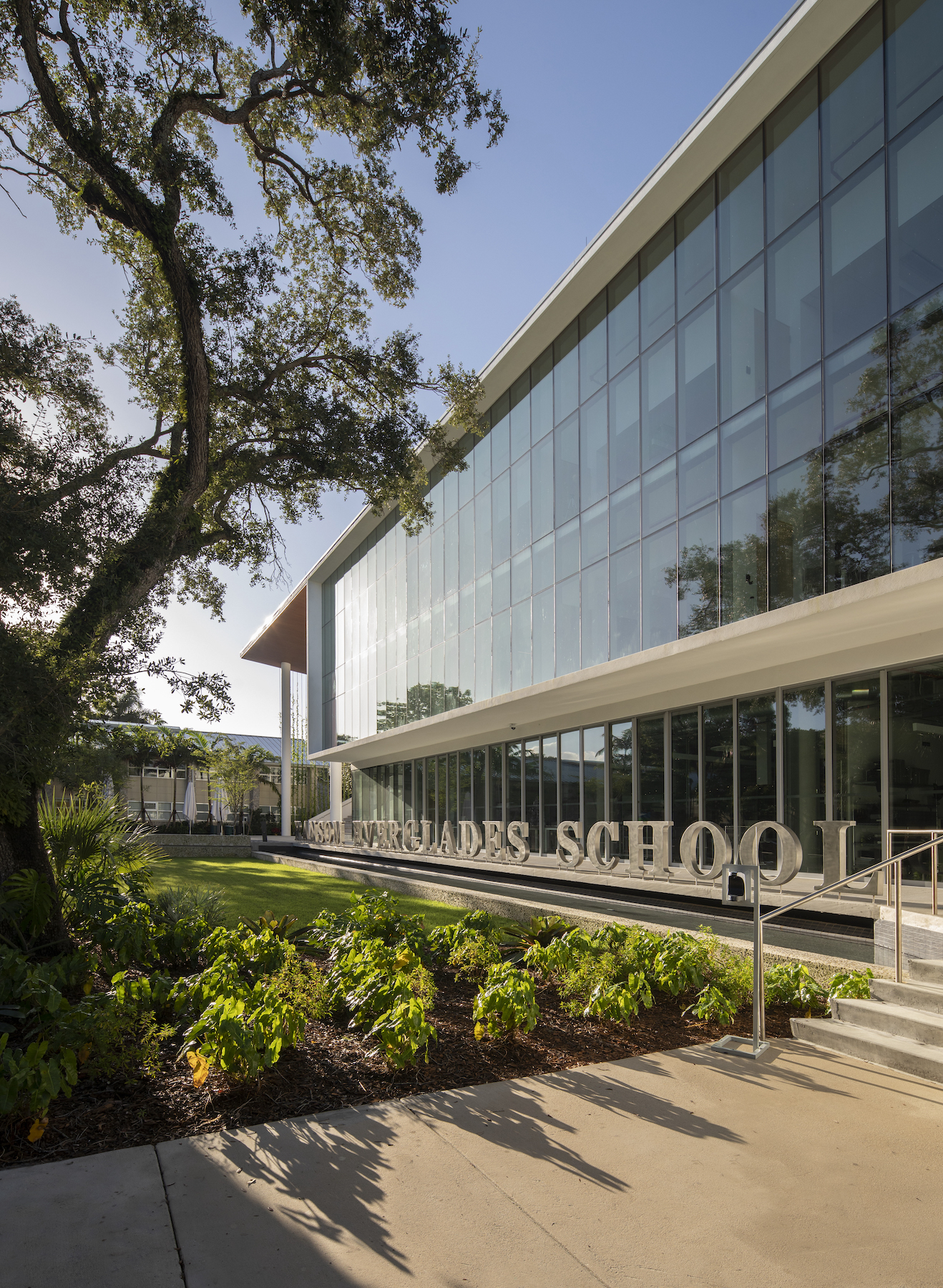
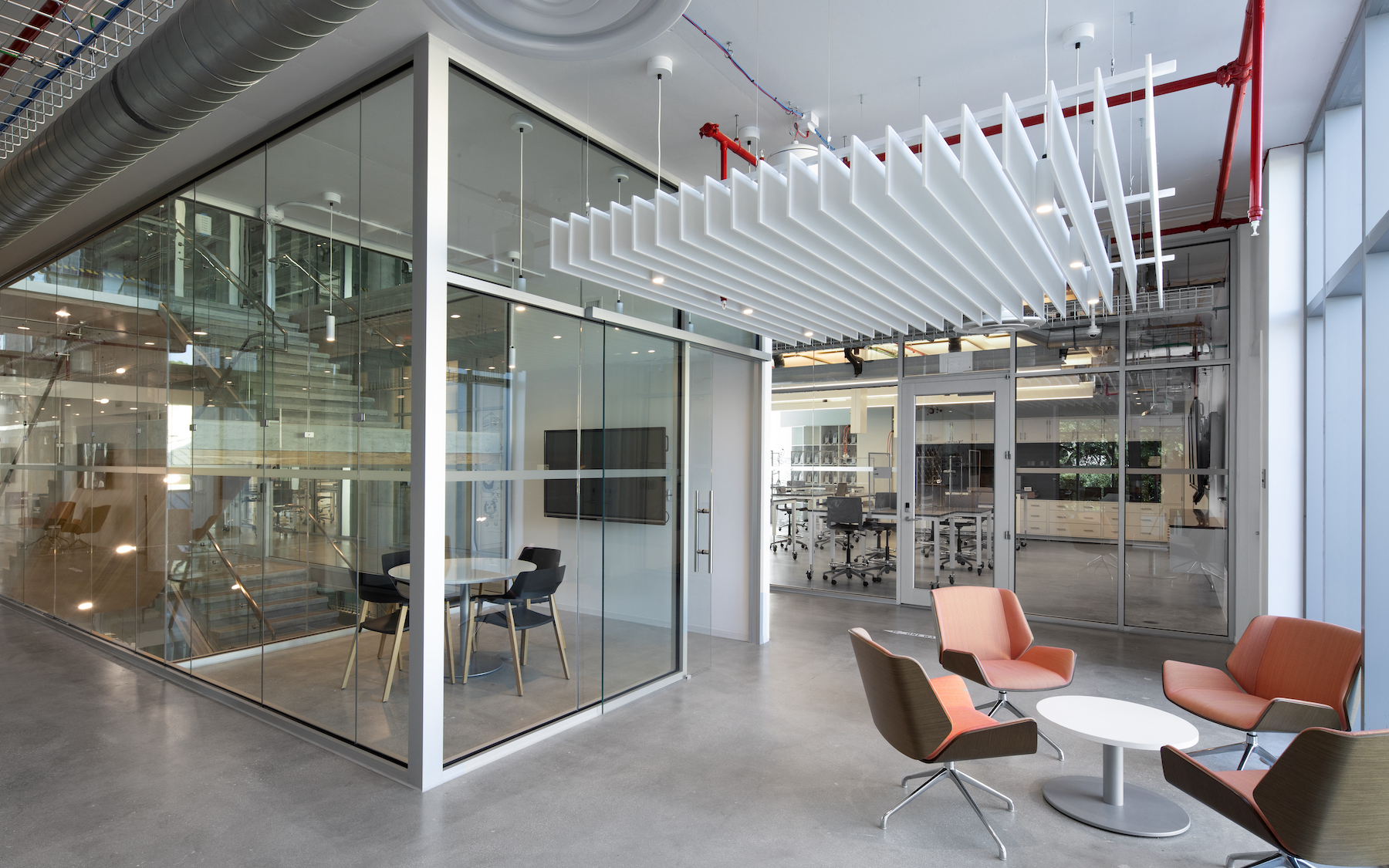
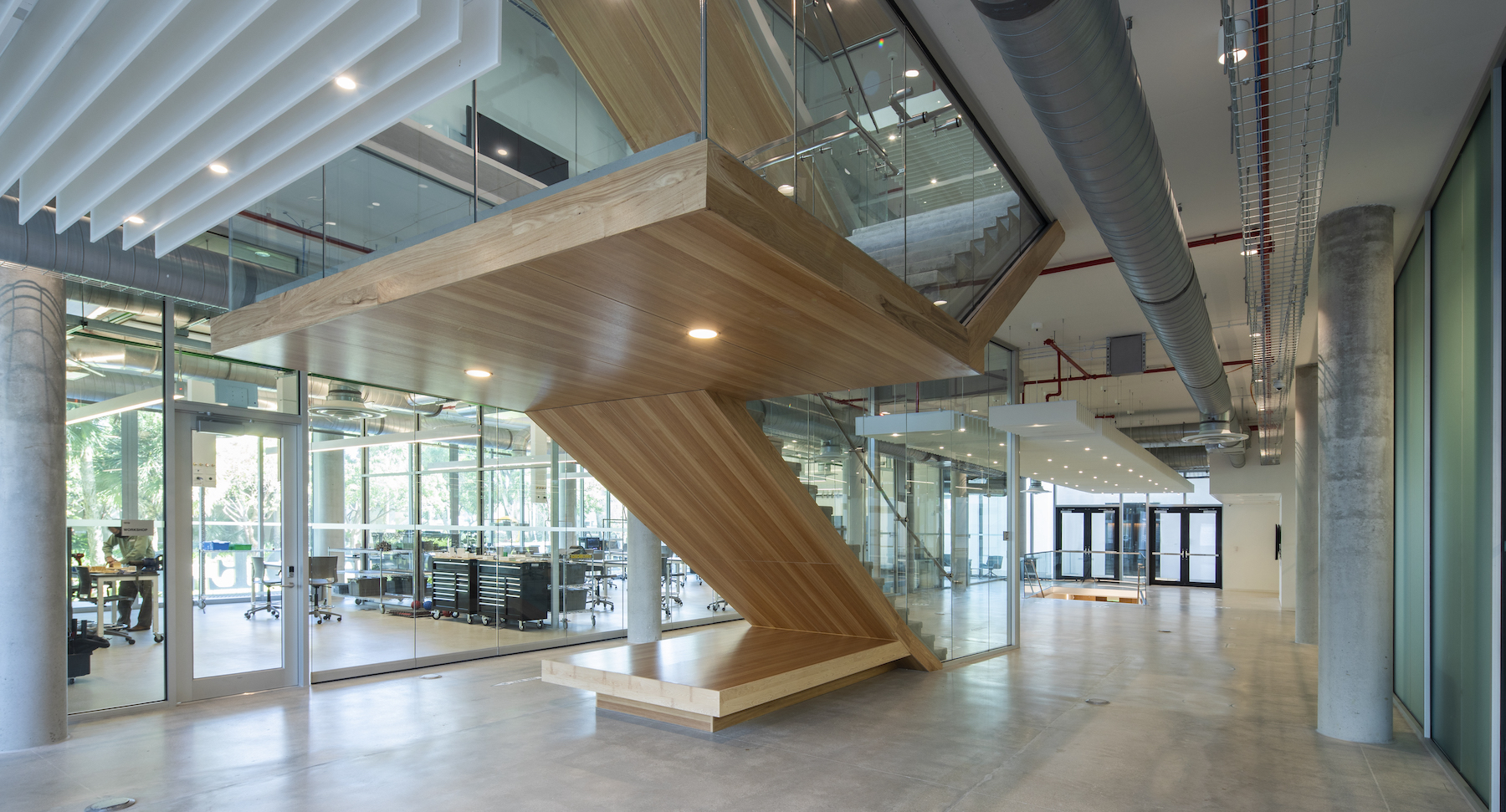
The STEM center at Ransom Everglades School is the result of a design pivot during the COVID-19 pandemic. Essentially a big glass box, Its classrooms and labs are supported by more informal tech-enhanced “in-between” spaces where students and faculty can interact. An aquatics lab functions as a water feature at the front of the building, framed by the exterior student commons and an incubator that was designed to be the center for faculty, administrators, students, and visitors to exchange ideas.
Build by Shawmut Design & Construction, the STEM Center features 10 flexible classrooms with movable walls and furniture, as well as laboratories for earth sciences, biology, chemistry, and physics that integrate with fabrication and maker labs. Utilizing smart-building design throughout, the facility has wide staircases, tech-enabled educational spaces, an outdoor rooftop lab, multi-purpose conference room, and a reconfigurable 200-person auditorium.
Bosch adds that the design also ushered in better circulation for the entire school. “The pandemic propelled this, and now we have a proof of theory.”
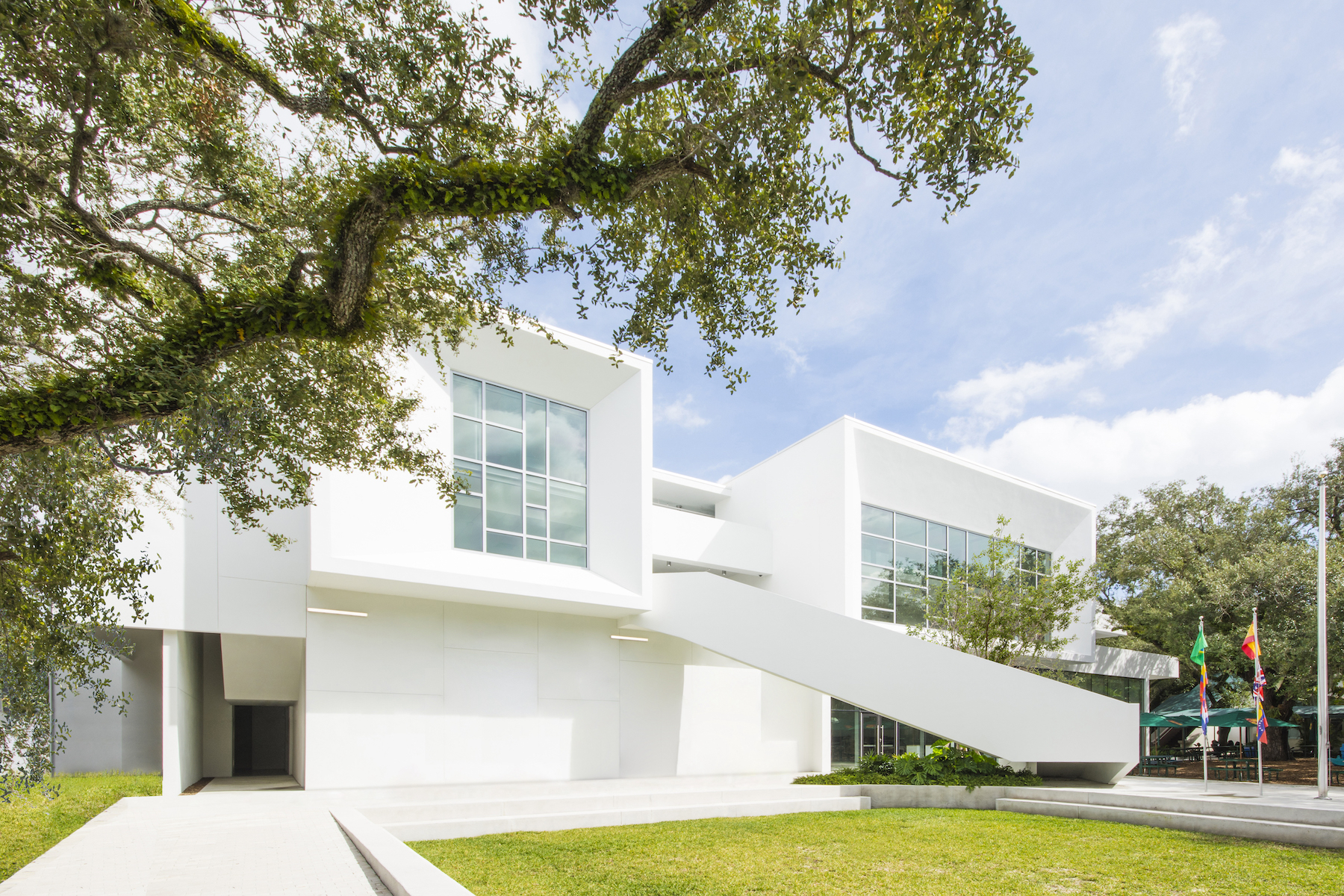
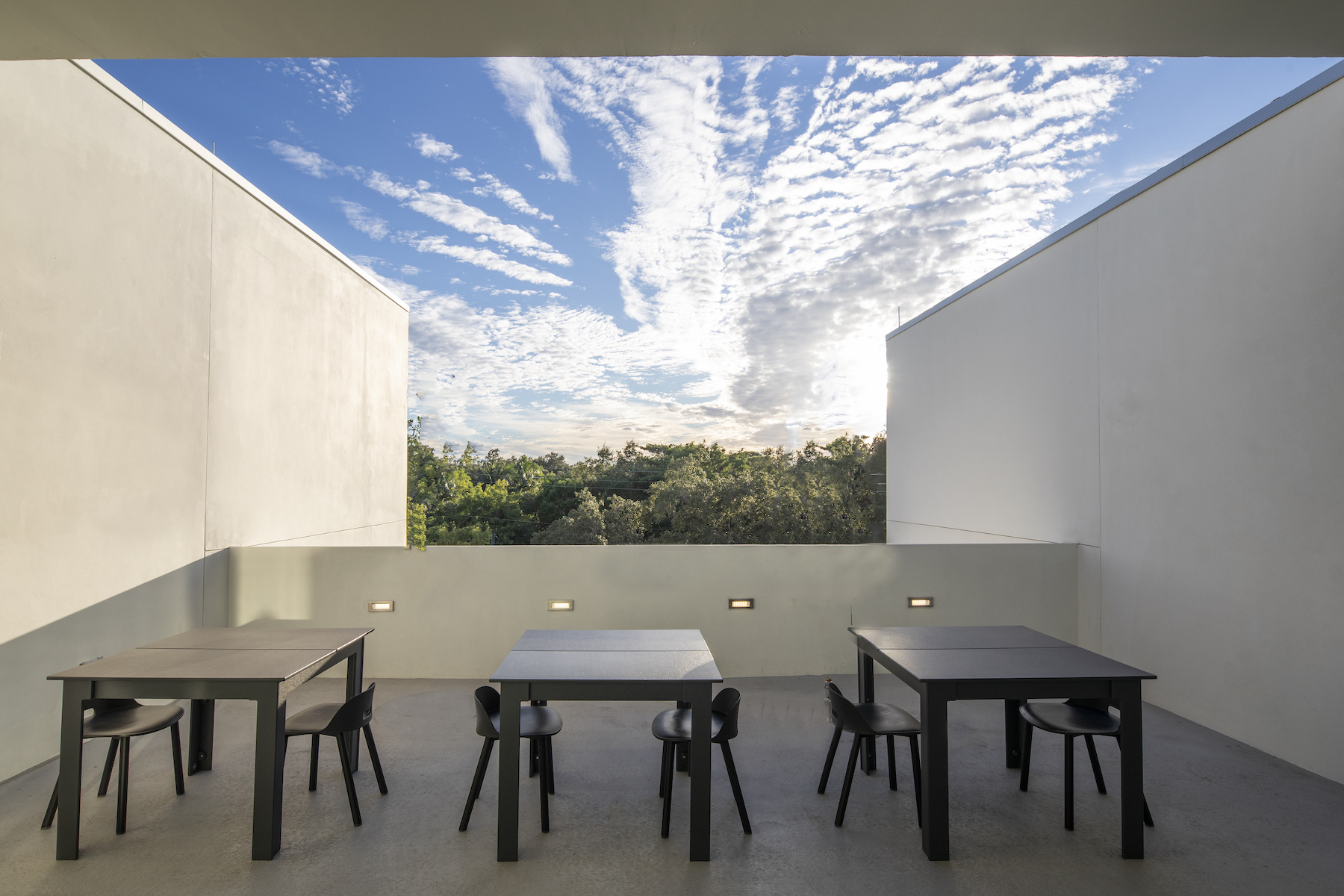 Another P&W project that dispensed with private faculty offices is the K-5 St. Stephens Episcopal Day School, also in Coconut Grove, which last October completed a 23,000-sf Arts and Innovation Center and a 3,700-sf Ministry Building, located at its entrance. This $9.4 million pavilion, constructed by Skanska, is an example of STEAM education in early childhood development that showcases principles of design flexibility and adaptability, team-based learning, and project-based outcomes.
Another P&W project that dispensed with private faculty offices is the K-5 St. Stephens Episcopal Day School, also in Coconut Grove, which last October completed a 23,000-sf Arts and Innovation Center and a 3,700-sf Ministry Building, located at its entrance. This $9.4 million pavilion, constructed by Skanska, is an example of STEAM education in early childhood development that showcases principles of design flexibility and adaptability, team-based learning, and project-based outcomes.
The design provides an array of informal learning spaces.
Related Stories
| Aug 11, 2010
Courtyard connects new and remodeled schools
Good Fulton & Farrell Architects of Dallas designed a major expansion and renovation at the Dallas Academy in Texas. The 22,900-sf addition serves as the school’s new front door and includes a library, student assembly area, cafeteria, seven classrooms, and administrative offices. The school’s existing 14,560-sf building was renovated to accommodate a lower school component, and...
| Aug 11, 2010
Connecticut high school gets a expansion and renovation
The Morganti Group, Danbury, Conn., is managing the construction of a $41 million addition and renovation project at Newtown (Conn.) High School. Designed by Fletcher Thompson, Shelton, Conn., the project consists of a 70,000-sf addition and 30,000 sf of renovations to the gymnasium and interior spaces.
| Aug 11, 2010
School district plans net-zero building
Camas (Wash.) School District is planning to utilize one of three energy sources—photovoltaics, wind turbine, or geothermal—to help take its new community high school completely off the grid. The school district commissioned Interface Engineering to explore all three options for the project, which is scheduled to break ground in August.
| Aug 11, 2010
LA high school takes design cue from historic Mexican architecture
The Los Angeles Unified School District recently opened the $75 million Felicitas and Gonzalo Mendez Learning Center, a high school in the Los Angeles neighborhood of Boyle Heights, near Little Tokyo. Designed by Nadel Architects in a joint venture with Barrio Planners Inc., the 114,000-sf school is vertically integrated, allowing the campus to fit on a compact, six-acre site.
| Aug 11, 2010
Nursing home turned charter school opens in Dorchester, Mass.
Cambridge, Mass.-based HMFH Architects spearheaded the design for the conversion of a former nursing home in Dorchester, Mass., to learning and community space for the Neighborhood House Charter School. The pre-K—8 school has two classrooms for each elementary grade level, clusters of middle school classrooms, a cafeteria, media center, and art, computer, music and science classrooms.
| Aug 11, 2010
Modest recession for education construction
Construction spending for education expanded modestly but steadily through March, while at the same time growth for other institutional construction had stalled earlier in 2009. Education spending is now at or near the peak for this building cycle. The value of education starts is off 9% year-to-date compared to 2008.
| Aug 11, 2010
Las Vegas high school focuses on careers in justice, emergency response
McCarthy Building Cos., St. Louis, recently completed construction on the 130,700-sf Veterans Tribute Career & Technical Academy, a Las Vegas high school that focuses on service career pathways in 911 dispatch training, law enforcement, crime scene analysis, emergency medical training, and computer forensics.
| Aug 11, 2010
Three Schools checking into L.A.'s Ambassador Hotel site
Pasadena-based Gonzalez Goodale Architects is designing three new schools for Los Angeles Unified School District's Central Wilshire District. The $400 million campus, located on the site of the former Ambassador Hotel, will house a K-5 elementary school, a middle school, a high school, a shared recreation facility (including soccer field, 25-meter swimming pool, two gymnasiums), and a new publ...
| Aug 11, 2010
7 Keys to Unlocking Energy Efficiency in Schools
Today’s best K-12 schools are embracing the sustainability ethos in their design and construction, and that can mean a healthier, more comfortable indoor environment and improved learning. Some studies contend that ample amounts of daylighting, for example, lead to higher test scores. High-performance HVAC systems that constantly draw fresh air into a classroom seem to help both teachers ...
| Aug 11, 2010
Blue-Light Schoolhouses
Add the explosion in the number of school-aged kids nationally to the glut of huge, vacant stores in many communities and what do you get? Big boxes being turned into schools. For districts facing population pressure, these empty retail buildings can be the key to creating classrooms quickly, and at a significant cost advantage.


